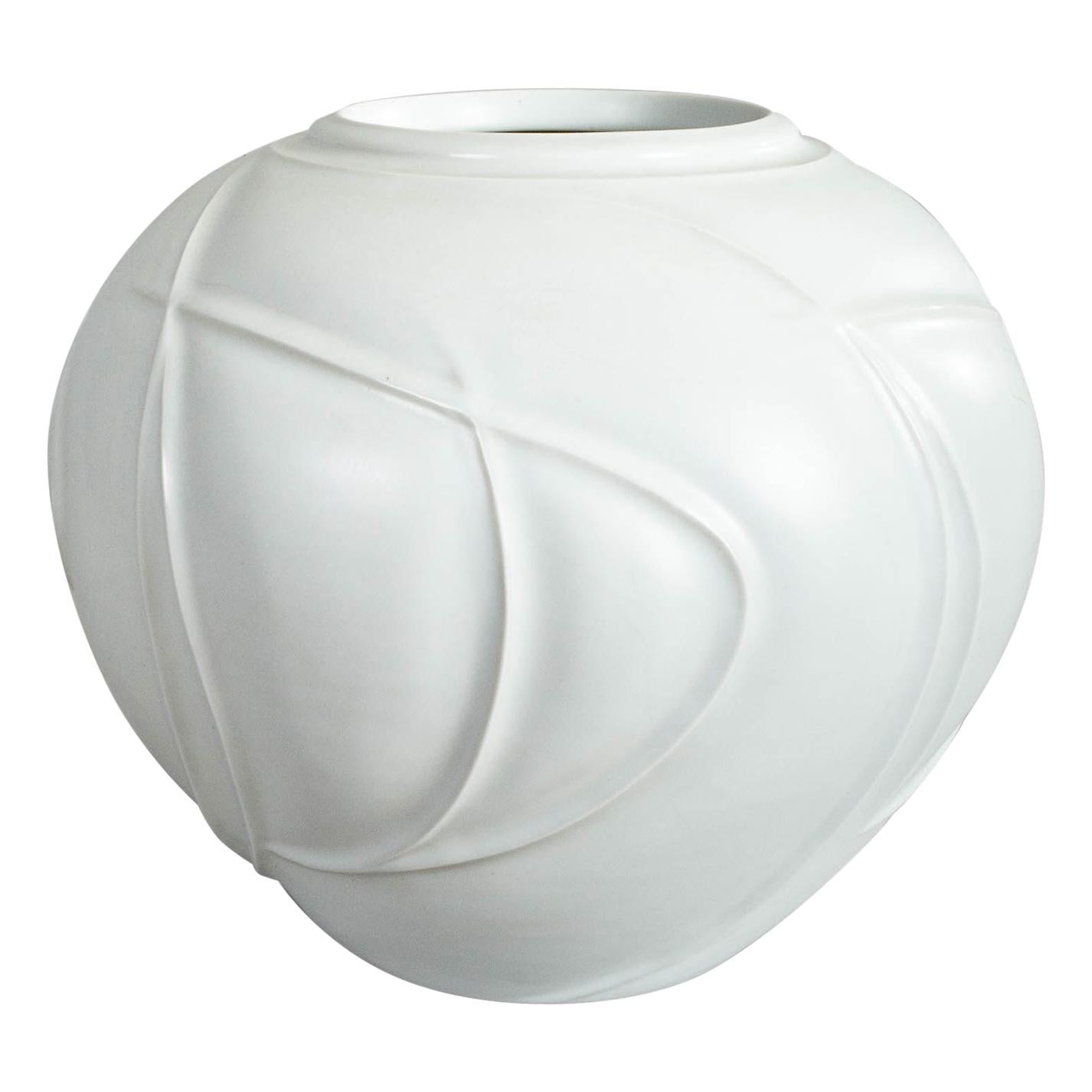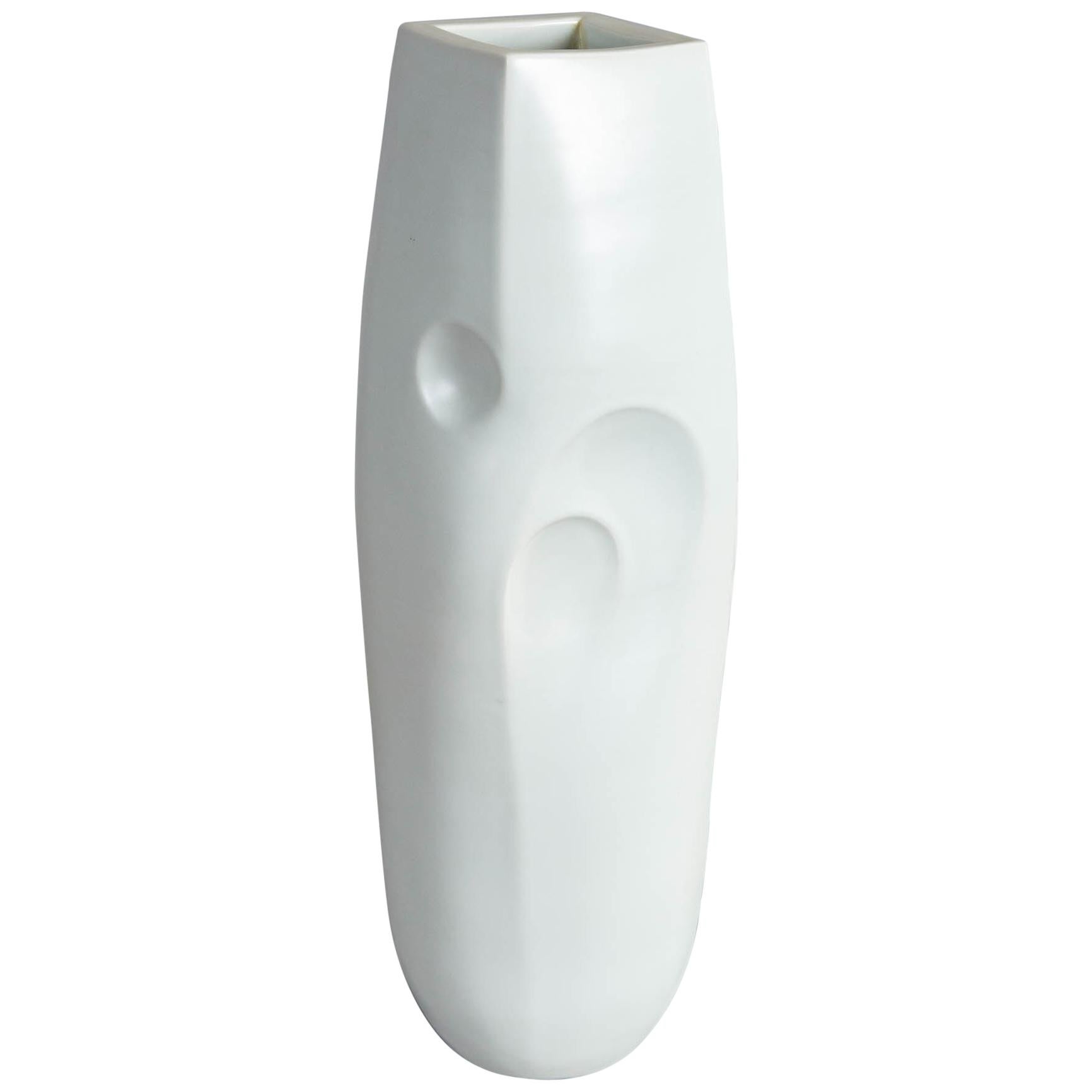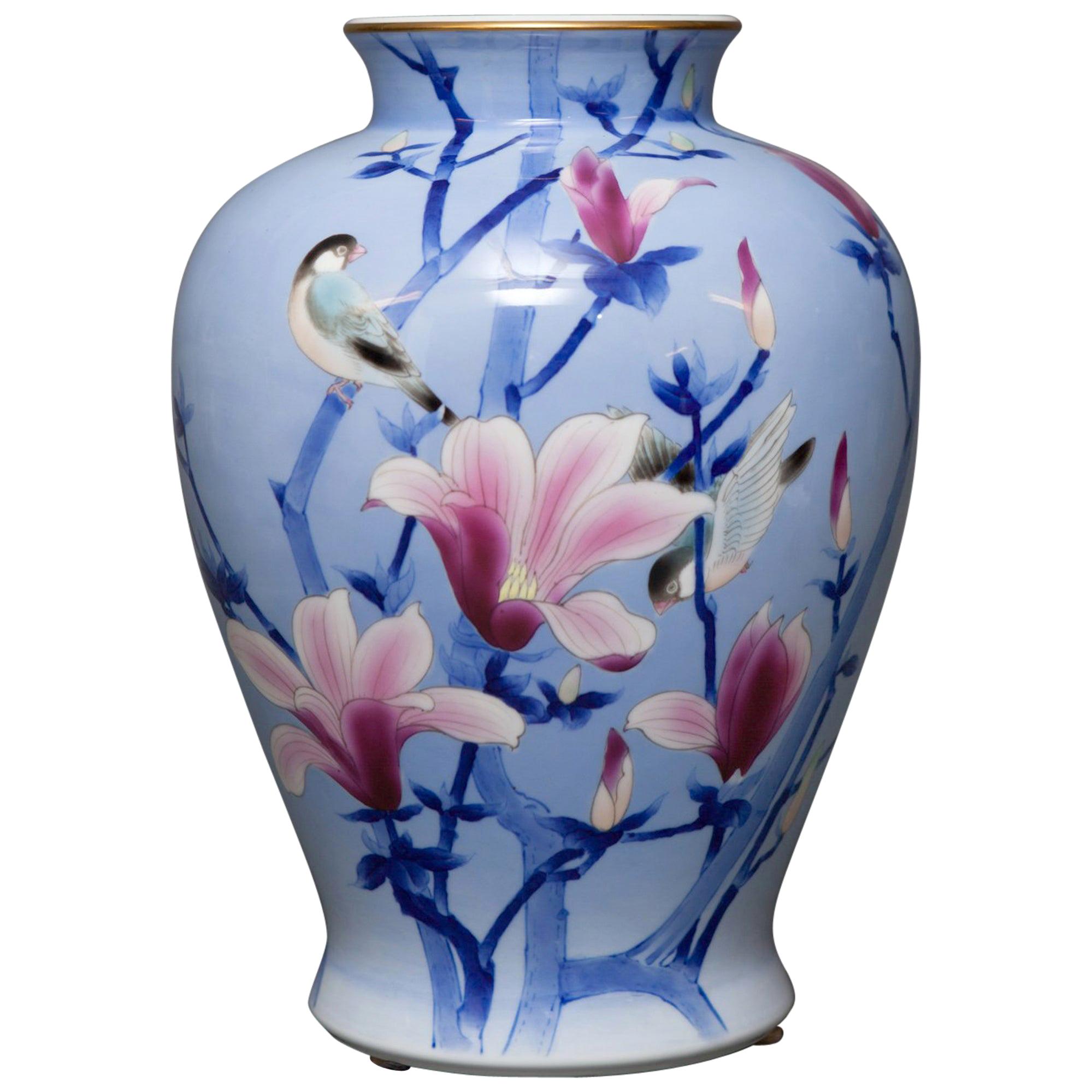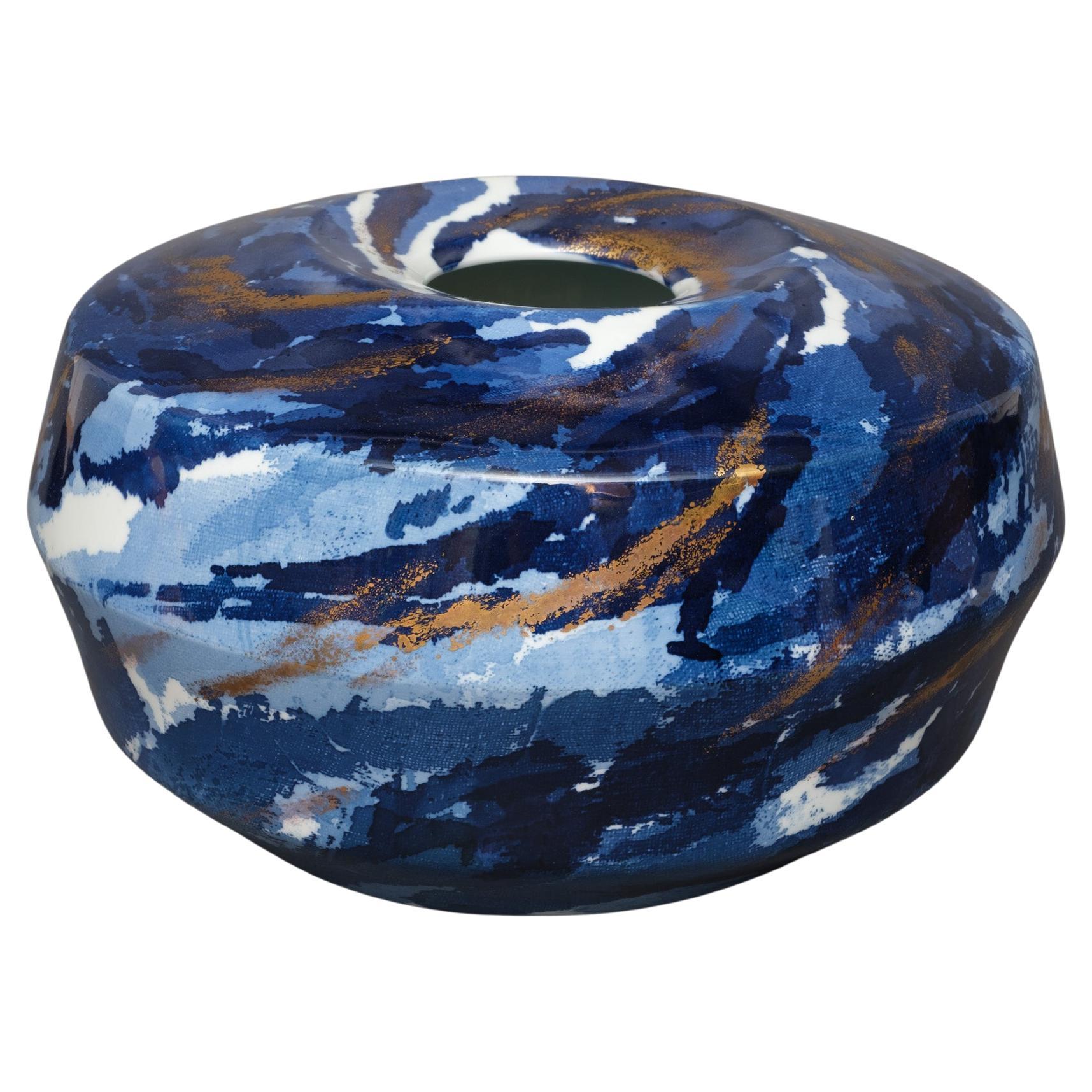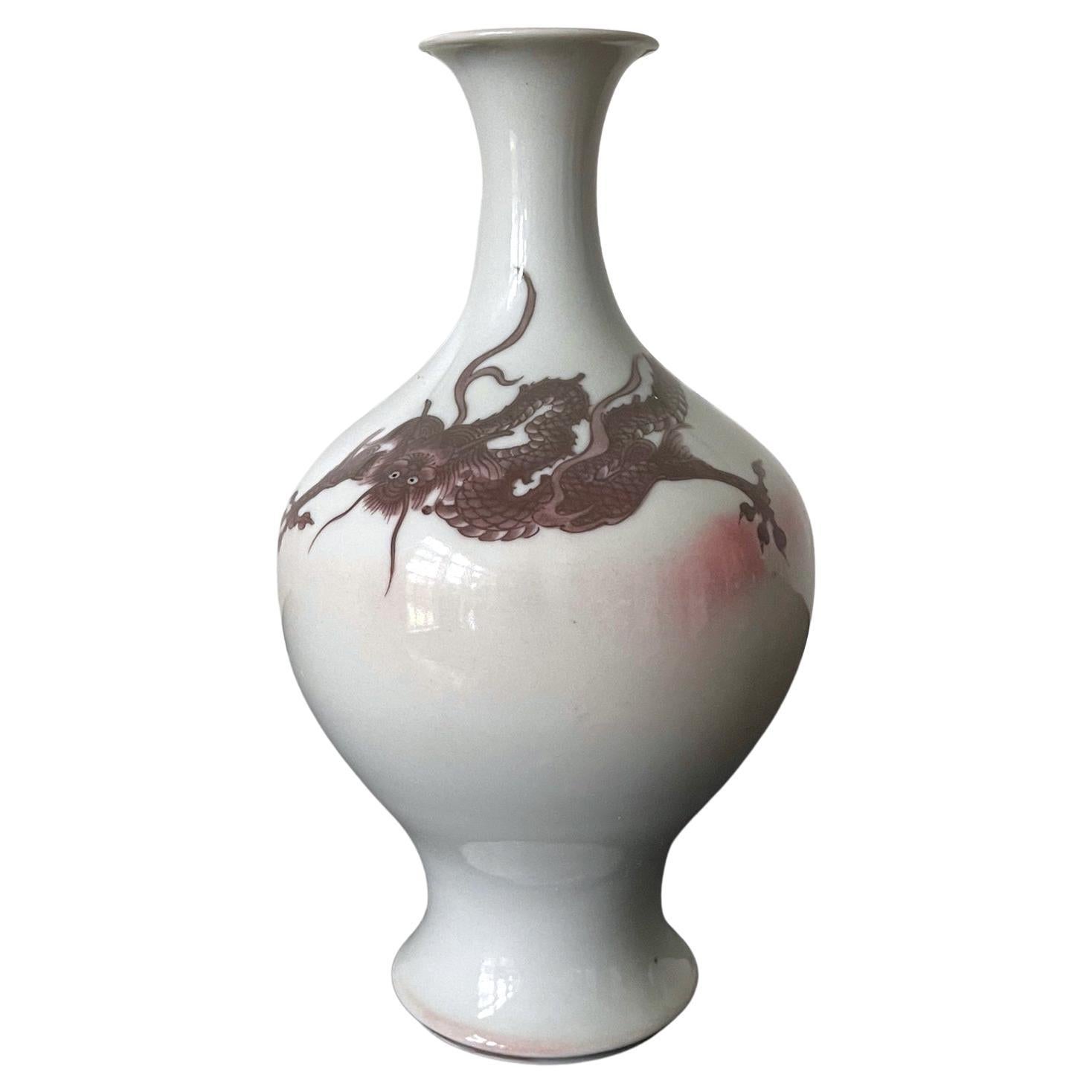Items Similar to Large Modern Japanese Porcelain Studio Vase with Organic Abstract Design
Want more images or videos?
Request additional images or videos from the seller
1 of 6
Large Modern Japanese Porcelain Studio Vase with Organic Abstract Design
About the Item
Artist signature on the bottom and on original storage box: Hasegawa Isamu.
Hasegawa Isamu was born in 1925 in Kyoto, son of famed porcelain artist Hasegawa Hakuho. He studied under both this father and Kusube Yaishi. He was first accepted into the Nitten in 1953, and exhibited there consistently gaining several awards. He received the Kyoto Shinbun Prize among others at the Kofukai Ten, and works were purchased by the Ministry of Foreign affairs as gifts to foreign dignitaries.
This vase was exhibited at the 3rd Shin-Nitten in 1960.
- Dimensions:Height: 12 in (30.48 cm)Diameter: 15.5 in (39.37 cm)
- Materials and Techniques:
- Place of Origin:
- Period:
- Date of Manufacture:circa 1960
- Condition:Most items that are 100 years old have been cleaned or polished in their lifetime. More involved restorations are mentioned in the above description. For a detailed condition report and a video of this item please contact us directly. -Naga Antiques.
- Seller Location:Hudson, NY
- Reference Number:
About the Seller
5.0
Recognized Seller
These prestigious sellers are industry leaders and represent the highest echelon for item quality and design.
Established in 1971
1stDibs seller since 2008
151 sales on 1stDibs
Typical response time: 4 hours
Associations
The Art and Antique Dealers League of AmericaAntiques Associations Members
- ShippingRetrieving quote...Ships From: Hudson, NY
- Return PolicyThis item cannot be returned.
More From This SellerView All
- Large Japanese Porcelain Studio VaseLocated in Hudson, NYWith organic abstract design. Artist signature on the bottom and on original storage box: Hasegawa Isamu. This vase exhibited at the 6th Shin-Nitten in 1963. Hasegawa Isamu was born in 1925 in Kyoto, son of famed porcelain artist Hasegawa Hakuho...Category
Vintage 1960s Japanese Ceramics
MaterialsPorcelain
- Large Japanese Porcelain Studio VaseLocated in Hudson, NYWith organic abstract design. Artist signature on the bottom and on original storage box: Hasegawa Isamu. This vase exhibited at the 2nd Nitten in 1970. Hasegawa Isamu was born in 1925 in Kyoto, son of famed porcelain artist Hasegawa Hakuho...Category
Vintage 1970s Japanese Ceramics
- Japanese Porcelain Studio Art VaseLocated in Hudson, NYWith lovely magnolia tree in bloom and finch on blue background. Signed: Fukugawa.Category
20th Century Japanese Meiji Ceramics
MaterialsPorcelain
- Modern Japanese Ceramic VaseLocated in Hudson, NYModern Japanese ceramic vase, the title of this piece is "Kaki yu" or "Persimmon glaze". Rectangular vase, with abstract design and heavy glazin...Category
Vintage 1970s Japanese Showa Ceramics
MaterialsCeramic
- Japanese Satsuma Vase with DragonLocated in Hudson, NYJapanese Satsuma vase: Ladies of the Court, Kannon and Gilded Dragon. Signed on the bottom.Category
Antique Late 19th Century Japanese Ceramics
MaterialsCeramic
- Japanese VaseLocated in Hudson, NYsignature reads: Nishiura (opening: 4 7/8" diameter). About the artist: Nishiura Takeshi was born in Fukui prefecture in 1941, and graduated the Tokyo University Law Department in 19...Category
20th Century Japanese Ceramics
MaterialsCeramic
You May Also Like
- Large Japanese Contemporary Porcelain Vase with a Blue & Gold Swirl DesignLocated in Amsterdam, NLVery large rotund-shaped porcelain vase with horizontal ribs and a covering underglaze design of overlapping swirls with a canvas pattern on a white ground. Heightened by gold lustre...Category
Late 20th Century Japanese Ceramics
MaterialsPorcelain
- Japanese Porcelain Glazed Vase with Dragon Design Mazuku KozanBy Makuzu KozanLocated in Atlanta, GAA porcelain vase with dragon design by Japanese imperial potter Makuzu Kozan (1842-1916), circa 1900s. The vase is made in what is considered early phase of his underglaze period during late Meiji era. In a classic baluster form, the surface of the vase was decorated with a slithering dragon in underglaze iron red circulating the exterior among pink clouds. The animated rendering of the dragon is fine and detailed, with five claws, scales, long tails and highlighted eyes. The pink cloud is misty and called Morotai or the hazy style, created with a unique technique developed in Kozan's studio called fuki-e by blowing the pigment powders onto the surface. Kozan Studio experimented with newly available colors from the west starting in the 1880s, which resulted in the expansion of the palette and style that bridged the east and west aesthetic tradition. Marked in underglaze blue on the base. Known also as Miyagawa Kozan...Category
Antique Early 1900s Japanese Japonisme Ceramics
MaterialsPorcelain
- Japanese Mid-Century Modern Studio Pottery VaseLocated in New York, NYJapanese Mid-Century Modern art studio pottery vase with luster glaze on diminutive tripod legs.Category
Mid-20th Century Japanese Mid-Century Modern Ceramics
MaterialsPottery
- Pair of Large Japanese Arita 'Imari' Porcelain Vases, Japan NineteenthLocated in Saverne, Grand EstExtraordinary pair of Arita porcelain vases with blue, coral and polychrome decoration, with gold highlights, of court scenes and floral landscapes. A restored cover and a chip on a ...Category
Antique Late 19th Century Japanese Ceramics
MaterialsPorcelain
- Modern Japanese 21st Century Porcelain Kutani Vase with Two QuailsLocated in Amsterdam, Noord HollandLovely piece with a great decoration of a birds in a garden scene. Condition Overall condition perfect, 200 x 210mm H x D Period 21st century.Category
21st Century and Contemporary Japanese Ceramics
MaterialsPorcelain
- Rare and Large Japanese Porcelain Vase Makuzu KozanBy Makuzu KozanLocated in Atlanta, GAA striking blue and white vase from the studio of Japanese Potter Makuzu Kozan, also known as Miyagawa Kozan (1842–1916), one of the most established and collected ceramist from Meiji Period. Born as Miyagawa Toranosuke, Kozan established his pottery studio in Yokohama around 1870s and later became one of the appointed artist to the Japanese Imperial household. His work was exhibited in many international fairs that the Meiji government participated at the turn of the century and won many grand prizes. With an impressively large size, this vase was likely made and reserved as a presentation piece for one of the many expositions the studio participated in the early 20th century. It was decorated with underglaze cobalt blue using the novel technique developed by Kozan called Fuki-e (the blow painting), in order to achieve the striking dimensional literary landscape known as "Mountain and Water". Being one of the most creative ceramists, Kozan started experimenting with new chemical colors from the West in the format of his porcelain glaze around 1880s. New colors allowed him to create underglaze designs that appeared bright, smooth and glossy. He even invented his own receipt of cobalt blue to achieve a much brighter yet softer shade, as evident on this vase. To create landscape that is realistic and dimensional, more common in the western paintings, he was inspired by the native Japanese ink painting technique developed around 1900 by Yokoyama Taikan...Category
Early 20th Century Japanese Japonisme Ceramics
MaterialsPorcelain
Recently Viewed
View AllMore Ways To Browse
With Asian Design
Abstract Vintage Designs
Japan Modern
Japanese Furniture Modern
Japanese Modern
Modern Japanese
Retro Abstract Designs
Modern Organic Art
Japanese Modern Design
Large Organic Modern
Japanese Mid Century Design
Japanese Midcentury Design
Japanese 20th Century Modern Furniture
Japanese Modern Ceramics
Retro Japanese Ceramics
Large Japanese Porcelain
Asian Vase Large
Midcentury Japanese Ceramics
